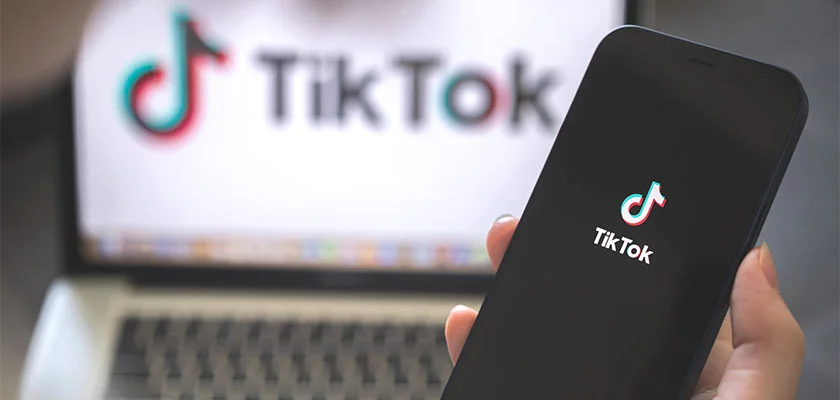How Is TikTok Challenging the Google–Meta Advertising Duopoly?
Until recently, there were two universal truths surrounding digital advertising. The first was that the industry, even in spite of its rapid growth, was pretty much impervious to the business cycle. And the second was that it was dominated...

Until recently, there were two universal truths surrounding digital advertising. The first was that the industry, even in spite of its rapid growth, was pretty much impervious to the business cycle. And the second was that it was dominated by the duopoly of Google and Meta—the former in search ads, the latter in social media.
But these truths are being challenged like never before. As China’s economy slows and the West slides into a recession, companies are taking stock and squeezing their marketing budgets.
Until recently, that would have meant cutting non-digital ads but maintaining or even increasing online spending. Not now. As most ad dollars go online, that strategy is obsolescing. In fact, Q2 2022 saw Meta’s first ever YoY decline in revenues. Below, Pixated Agency gives further details.
This Might Not Be the Worst It for Alphabet
Google and Meta’s corporate parent Alphabet might once have hoped to offset the slower growth of the digital ad pie by grabbing a bigger slice of it. Not anymore.
Although both companies are expected to have raked in $300bn in revenues by the end of this year, sales of their biggest Western rivals will actually amount to a quarter of that. That might not sound like much, but it will still give the incumbents cause for concern. After all, as recently as five years ago these rivals were scarcely even in the ad business. And as digital advertising enters a period of change, the challengers look well placed to boost these hard-won gains.
By Far the Noisiest Newcomer on the Scene Has Been TikTok
Since its release in 2016, TikTok has sucked ad dollars away from Facebook and Instagram, Meta’s two most profitable properties. So much so, in fact, that the two social networks have begun reinventing themselves in the image of their Chinese-owned rival. TikTok’s global revenue will exceed $11bn this year. In 2024, that’s expected to double.
TikTok reached 1 billion users in 2021, faster than any other social media platform. Users spend 45 minutes a day perusing its short-form videos. Ad spend on TikTok in Europe alone increased by 400% over the course of 2021. And not only has TikTok disrupted the social media landscape, but it has now almost inadvertently become a challenger to Google Search, based on user behaviour. 40% of Gen Zers now use TikTok for discovery as opposed to the Google search engine.
Alphabet Might Need to Be Wary of Competitors Closer to Home, Too
Back in the US, a trio of tech firms are loading ever more ads around their main businesses. Take Amazon, which is forecast to have taken 7% of worldwide digital-ad revenue this year, up from less than 1% just six years ago. Amazon’s ad sales in 2021 of $31bn roughly equates to that of the entire global newspaper industry.
These days, Amazon execs talk of the company having three ‘engines’ where previously there were only two: retail, cloud computing—and advertising.
Then there’s Microsoft, set to have taken 2% of global sales this year—slightly more than TikTok. Its search engine Bing still has only a small share of the search market—but that market is gigantic. And the B2B ads on its social network LinkedIn mean it can monetise the time users spend on it at a rate four times that of Facebook. In this way, LinkedIn actually generates more revenue than certain medium-sized networks, including Twitter and Snapchat.
Lastly and perhaps most surprisingly is Apple, who used to rail against intrusive digital ads. But now its smartphone sales have plateaued, the company is looking for new ways to monetise the 1.8 billion of its devices currently in circulation. Apple’s ad business is already generating $4bn a year, making it as big an ad platform as Twitter—and its execs believe they’ve barely got started.
They may be right. After all, changes are coming that will suit these challengers—and Apple itself is partly responsible for what many consider to be the most consequential development yet. Introduced last year, the company’s rules on ‘app-tracking transparency’ (ATT) have made it a lot harder for advertisers to follow users around the internet to serve them display ads, which are based on their interests as opposed to what they’ve searched for.
Meta’s social networks specialise in display ads, and the company has estimated that ATT would knock $10bn off its ad business this year. Then the EU’s new Digital Services Act has taken steps in the same direction, and the US is currently mulling over similar legislation of its own.
There’s room for three here—but you can bet your bottom dollar they’ve got eyes on each other. It’s worth remembering too that, while the internet classically boosts platforms into widespread popularity over relatively short periods (TikTok was launched only in 2016), tried and trusted platforms continue to perform strongly for advertisers.
Whether TikTok will challenge the Google–Meta advertising duopoly on a global level may depend on the outcome of the US Government’s upcoming data security deal, which is founded on its concerns that TikTok is passing user data to the CCP.
But regardless of Google and Meta dominating digital ad spending, it’s understandable that they feel under greater threat than perhaps ever before in their respective histories.
As such, it’s imperative that advertisers stay open-minded, ready to explore new platforms and opportunities—especially those showing increased user interest. And less ad clutter.

 Tekef
Tekef 





























![Are You Still Optimizing for Rankings? AI Search May Not Care. [Webinar] via @sejournal, @hethr_campbell](https://www.searchenginejournal.com/wp-content/uploads/2025/06/1-1-307.png)


